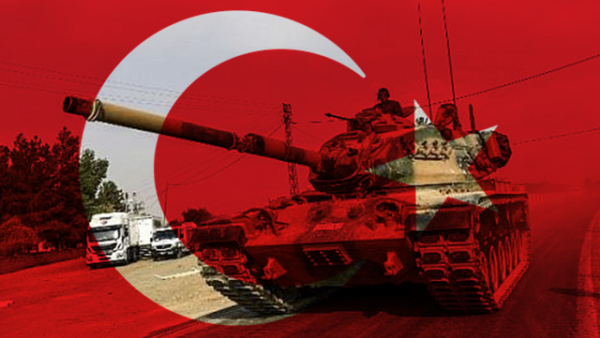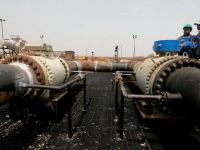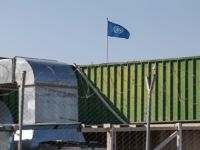- Turkey and Syria have begun firing at each other near Aleppo
- The confrontation marks an escalation in the Syrian war
- The de-escalation agreement continues to erode
- The Syrian regime is also using chlorine gas in safe zones
Turkey and pro-regime forces in Syria have exchanged volleys of artillery fire near Aleppo, according to news reports.
The shelling, reportedly initiated by pro-regime forces, marks an alarming escalation in the war in Syria—a development even more ominous given it happened inside a designated ‘de-escalation zone’ meant to wind down violence.
The exchange of fire signals both Turkey’s changing role in the Syrian war and the erosion of the de-escalation agreements, which were ostensibly negotiated to help precipitate an end to the worst of the violence in Syria.
The war in Syria is now in its seventh year, and does not appear to be winding down.
Over the past summer, Turkey, Iran, Russia and Syria gathered in Astana, Kazakhstan to negotiate a plan to establish ‘de-escalation zones’ in Syria to provide unfettered aid access and encourage the return of displaced persons.
Turkey was mandated to guarantee the deal in Idlib, along with Russia, and was given the greenlight to enter into the northwestern Syrian province and set up observation posts to monitor violence and ensure peace in the region.
However, Turkey appeared to exploit the terms of the deal to establish its first observation posts along the border between Idlib province and the Afrin region—a largely Kurdish region controlled by Kurdish militias such as the People’s Protection Units (YPG). Turkey considers these groups terrorist organizations due to their ties with the Turkish Kurdish insurgent group, the Kurdistan Worker’s Party (PKK).
Rather than ensure peace, Turkey seemed to use the agreement as a launchpad to invade Afrin, which it has done. During the siege of Afrin, Turkish military convoys began driving through Idlib towards regime-held Aleppo.
Turkish convoys of up to 100 vehicles, includes heavy tanks, drove toward Aleppo before being stopped by pro-regime shelling. However, according to Al Monitor, Turkish jets entered into Syrian airspace to ensure safe passage of the convoy.
The convoys headed towards the town of Al-Eis, which lies along a strategically crucial roadway that the Syrian regime has been trying to secure for the past two years. The Syrian regime and its allies maintained a forward base in Hader, a town few kilometers to the east of Al-Eis. Turkey is claiming Al-Eis as a location for another one of its observation posts.
In practical terms, this means Turkey is blocking off a route for the Syrian regime and its allies, thus slowing down their plans to recapture much of the Idlib province, which is currently besieged by Syrian ground forces and a joint Russian-Syrian aerial campaign.
Turkish media report that one Turkish soldier died and five others wounded near Al-Eis. The official Turkish response did not specify as to whom they believe carried out the artillery shelling.
Is Turkey Gaming the De-Escalation Agreement?

A Turkish Armed Forces soldier (AFP/FILE)
The regime-led shelling of Turkish targets reflects a growing fear within the Syrian regime that Turkey is beginning to establish control over Idlib in a way that threatens Assad’s strategy of ultimately re-uniting Syria under his rule.
Such tension is likely to continue between Turkey and Syria as this shelling comes during the construction of Turkey’s fourth observation post. It plans to build eight more for a total of 12 observation posts running from along the north and south of Idlib.
Each observation post seems intended not to monitor and enforce peace in Idlib, but to monitor adversaries of Turkey, like Kurdish militias or the Syrian regime and its allied forces. This is heightened by the fact that Al-Eis reportedly lies outside the agreed upon arena for a Turkish monitoring presence, meaning its observation post would violate the de-escalation agreements.
The de-escalation agreements were designed to help draw down the Syrian Civil War, but now they appear to either be ignored by its own negotiators and guarantors or manipulated as a means of accessing footholds in Syria. For Turkey, it is the latter, but for the Assad regime, it appears to be the former.
Chlorine Gas in Syria

A child helps an infant breath with a mask in Syria after gas attack (AFP/HASAN MOHAMED)
While Turkish convoys crossed through Idlib’s countryside en route to Al-Eis, Assad was dropping chlorine gas on civilians in Eastern Ghouta, a suburb of Damascus. Eastern Ghouta, like Idlib, is also marked as a de-escalation zone, but that has not stopped a relentless bombing campaign in the region by the regime, which sources say is intended to weaken opposition forces for an eventual seizure of the region.
The United States’ Department of State, in an official statement, accused the Syrian regime of deploying chlorine gas six times in 30 days, including in Eastern Ghouta and near Idlib. The statement also puts blame squarely on Russia for failing to put an end to such attacks, and the U.S.’ Ambassador to the U.N. has accused Russia of impeding U.N. probes into the gas attacks.
“Russia has delayed the adoption of this statement, a simple condemnation of Syrian children being suffocated by chlorine gas,” Haley said. Haley’s Russian counterpart, Vassily Nebenzia, denied the claim and called Haley’s statement a “slander against Russia.”
Whether or not a U.N. probe goes ahead, the people in Syria are suffering and will continue to do so as military interventions and alleged war crimes decimate the population.









